

This month, even richer in jazz news, we’d like to present the colorful album “Caméléon” by accordionist Frédéric Viale.
If we’re counting right, this wonderful galette is his seventh album. Like us, you were dazzled by his previous album « Toots Simplement », and now you’re running to your record store to buy “Caméléon”!
From the very first bars of the first track – Frou Frou – the sound grabs you, the vibrations reminiscent of great organs… And you quickly recognize Henri Chatau’s popular tune.
So you sit back in your living-room armchair, turn up the speakers and plan to spend an hour and eight minutes revelling.
Then comes the eponymous track, “Caméléon”, a new composition by Frédéric Viale.
It’s virtuoso without overdoing it. Always delicious.
And the same goes for all the tracks that follow.
Shit, it’s 9:30 p.m. and I had a dinner date outside.
… I’ll explain my lateness, I had a very good excuse!
Indeed, the 19 tracks follow on from each other like pearls on a Koboloi string, as you let your mind wander to the heights of this sometimes cheerful, mechancolic, rhythmic music…
That’s Jazz folks! That’s Couleurs Jazz my Chameleon!
The next day, I give Frédéric Viale a call, and he’s off on a brilliant tour to present his new baby in our provinces and beyond.
He lends himself seriously to the interview I’m giving you here, lucky readers of Couleurs Jazz.
As for Couleurs Jazz Radio listeners, they can listen to Caméléon on their favorite media. Cameleon’s tracks will sit alongside those of “Toots Simplement”, punctuated by the latest jingles from your favorite radio station: “Couleurs Jazz Radio, Simply Jazz…”.
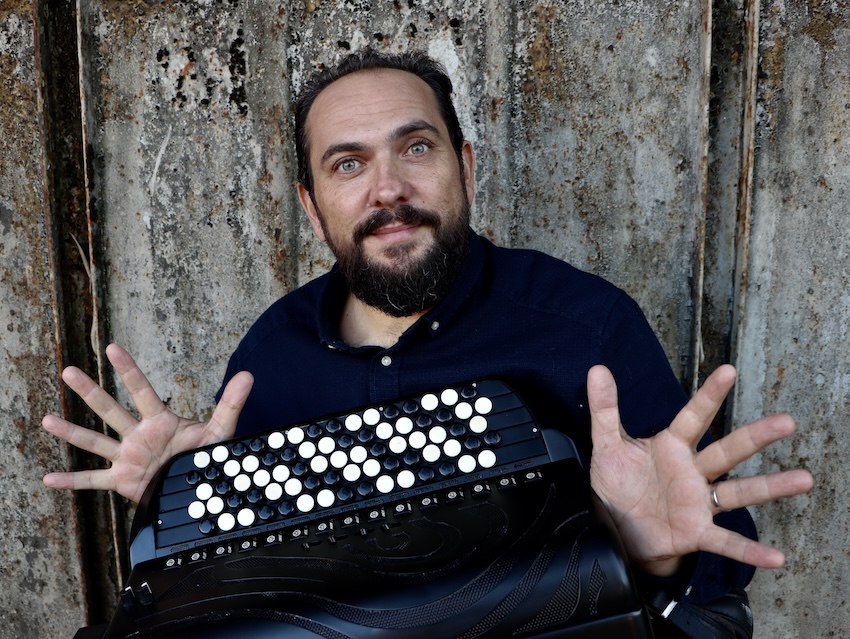
Dear Frédéric Viale, why the title Caméléon? Is it to do with the different colors the animal can blend into? Is it a way of hiding or adapting? ?
Frédéric Viale : The Chameleon has the particularity of adapting to its environment. It changes color to go unnoticed. With my accordion, I was soon attracted to a wide range of musical sensibilities. Musette, swing, jazz, Brazilian and Argentinean music, Cuban music, classical music and traditional music in general. I had to adapt my playing to the styles I wanted to play.
I think jazz enabled me to quickly understand that I had the right and even the duty to propose something singular. A personal universe, a personal language. Without, of course, trying to demonstrate or show anything. Just to be able to exist artistically through an instrument. At first, I hid myself a little in the sense that I only played my own music, feeling illegitimate to play other people’s music. I think I needed to mature and gain confidence.
Little by little, like a chameleon, I began to adapt this instrument to what I wanted to play, and even more, I was impregnated with everything I had listened to. I think my music is very colorful and eclectic. You can feel all my influences very quickly.
Choosing the accordion, an instrument sometimes tinged with musette and flonflons, as a travel companion for many years. Can you explain this choice?
FV :Basically, it wasn’t a choice. I wanted to do what my older sister did. We were in an accordion club run by Lucien Galliano.
For the first few years, I didn’t have any particular connection with the instrument, but around 13-14, I became passionate first about music and then very quickly about this instrument.
Musette and flonflons don’t bother me when they’re well played.
But, very quickly and thanks to the teacher I had, I was very attracted by the musicians who took the musette elsewhere. Tony Murena, Jo Privat, Gus Viseur, Marcel Azzola, Joe Rossi, Joss Baselli, Andre Astier, Roland Romanelli, Daniel Mille and, of course, Richard Galliano.
The accordion owes a lot to all these musicians. After that, I think I listened to fewer accordionists than jazzmen of any kind. Early on, I preferred jazz and improvised music. From Michel Petrucciani, Didier Lockwood, Eddy Louiss, Maurice Vander, Pierre Michelot, Christian Escoudé, Bireli Lagrene, Michel Portal and Daniel Humair to Miles, Bird, Bud Powell, Coltrane, Hampton Hawes, Mulgrew Miller and Woody Shaw.
But also Paquito de Rivera, Irakere, Piazzolla, Hermeto Pascoal, Sivuca, Enrico Rava, Jan Garbareck, Joachim Kuhn, etc.
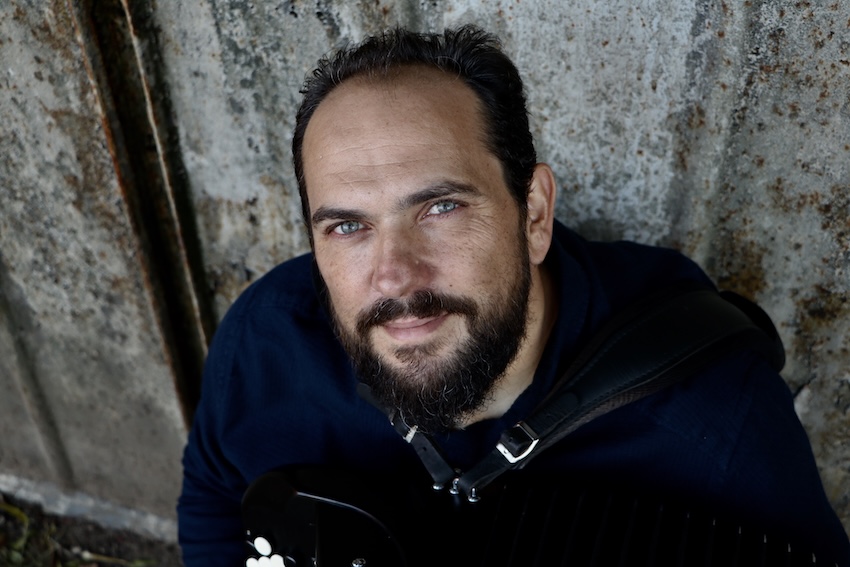
In addition to the accordion, 3 tracks are played on the Mellowtone, an incredible instrument that you featured on your previous album, “Toots Simplement”, which also really thrilled us. Why this choice?
FV: Absolute love at first sight for this instrument. Unique in its sound and the way it’s played.
Inventor Anatole Tee has done wonders with this new sound. This instrument is close to the accordina, but at the same time has something more racy, unique and powerful. It’s not a question of better, it’s just elsewhere, and that’s already huge.
I wanted to add a different breath of fresh air to this solo accordion album.
Putting myself in the shoes of those who will listen to this album, I thought it wise to offer 3 different sonic tableaux. It’s a break.
I play three classical melodies Salut d’Amour d’Edgar, an extract from Brahms’ 3rd symphony and a composition in homage to Anatole.
I’m one of those music lovers who are not a fan, apriori, of the accordion (apriori are inevitably silly…). Yet I know that so many great practitioners of this woodwind musical instrument make me totally revise my judgement and instantly turn me around. I’m talking about Vincent Peirani, for example, of whom I’m an unconditional follower, but also Frédéric Viale! Because when I hear your playing and your music, particularly in your latest opus “Caméléon”, I’m astounded by the sound you’re capable of producing. How do you explain that? What’s the magic? or what are your recipes?
FV: First of all, thank you for all the compliments. I take them with pleasure (laughs)
…on the recording quality: I recorded this album in Udine, Italy, at Arte Suono studio.
Sound engineer Stefano Amerio is in charge. It’s one of the best studios in Europe, and one of the best studio sound engineers in the world. He has won numerous awards and has been recording ECM records albums for many years…
It was very important for me to be able to rely on an exceptional sound. During the recording, it makes you more comfortable. It’s not a battle, it’s an ally.
As for the magic and the recipes, frankly…. I really don’t know. And I don’t think anyone really knows. I wanted to make an intimate album, without frills, melodic and uncluttered. I tried to get to the heart of the matter. To be myself and accept myself. Not to make a virtuoso album, but just to make music by playing pieces I like.
I thought a lot about Ahmad Jamal before recording. (Well, that wasn’t his only quality:))
Favoring melody and groove, a sonic climate. The hardest part is that now I’m alone. But I kept this in mind.
Play as if you had a band behind you. Leave some space. And have fun!
So to answer your questions honestly, I unfortunately don’t have any answers 🙂 if it’s magic for you, then I’ve succeeded!

Beyond his playing and virtuosity, he emphasizes the musical sense, the jazz that respects tradition and history, yet offers resolutely modern music. What’s your take on modernity, evolving jazz and tradition?
FV: It’s Dizzy’s ultra-famous words: “To play jazz, you need to have one foot in the past, and another in the future.”
After that, the term modern music is really difficult to define. If you want to play modern, what does that mean?
To play more modern than John Coltrane, Michael Brecker, Keith Jarret, Wayne Shorter, Herbie Hancock, Scott La farro… You have to get up early, as they say 😉
Many musicians claim to play modern music, some succeed, others should be more aware of the history of this music. As for me, I’m just trying to evolve. To be as honest as possible. To progress at my own pace, while respecting the music and my own integrity. That’s already a lot. Of course, dance and tradition are part of my music. The notion of rhythm and melody too.
That doesn’t mean I don’t like modal music, free music, contemporary music… It’s just that my musical DNA is rooted in tradition.
On the other hand, from an accordion point of view, I consider myself to be modern. In terms of my sound, my compositions and the path I’ve chosen.
Can you describe the different tracks on the album a little, or explain your choices? …Or tell us a little about the tracks on the album. (I don’t want to force you to make an exhaustive list, given the richness of the palette (19 tracks!)
FV: With this repertoire, I wanted to play as many styles as possible. This is obviously linked to my influences.
There’s a little-played standard like Namely You, Ray Brown’s Gravy Waltz, made famous in France by Claude Nougaro, and a magnificent composition by Tom Harrel, Roman Nights, a highly melodic, intimate ballad.
More traditional pieces like Joseph Colombo’s Nany, a waltz from the musette repertoire, or La Matriarca, which is more traditional South American music. It’s a composition I wrote in Medellin, Colombia.
Caméléon, Iguaçu and Tango du Sud are compositions that reflect my universe, marked by Argentinean and Brazilian music.
This repertoire includes two Brazilian composers, Natallino Neto who wrote Moreninha and Hermeto Pascoal for Cancao da Tarde.
Sol Pleureur is a waltz written in tribute to Andre Astier.
Novecento is a composition inspired by Italian culture. Music from films by Fellini, Bertolucci and others.
What would you like to add to this Cameleon project? or in general…
FV : This project was a challenge for me. I have to say that all the positive feedback I’ve had since its release makes me very happy. It’s never easy to come up with an entire solo album, especially with such a controversial instrument.
I hope it will appeal to as many people as possible. The accordion unfortunately suffers from a lot of apriori, rejection and barriers. I hope it will change some people’s minds, especially jazz festival programmers.
As for future projects, I’m currently working with Antonela Lucía, a magnificent Italian-Argentinian singer with an exceptional voice. It will be an album of songs in Spanish and Italian. All compositions by Antonela and myself. I dreamed of making an album of songs, and I’ve found an artist with whom I get on perfectly. Thomas Bramerie, Jean Marie Ecay and Zaza Desiderio will be part of the adventure.
In the meantime, let’s listen to this magnificent album:
Thank you again Frédéric for shedding more light on this magnificent project!
Caméléon is a Hit Couleurs Jazz.
They are part of the “Best of” albums released in October 2024. It will therefore be featured prominently throughout November on Couleurs Jazz Radio.
Caméléon was released on the Diapason label on October 11, 2024.
Frédéric Viale will give his Album Release concert at Sunside, on November 13.
©All photos by the excellent Jonathan Viale.
Translated with the help of www.DeepL.com/Translator
–



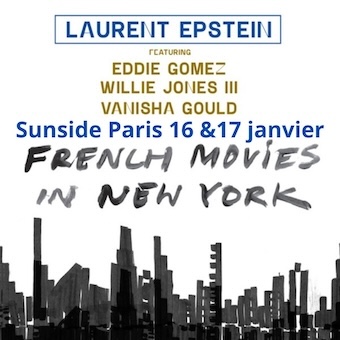



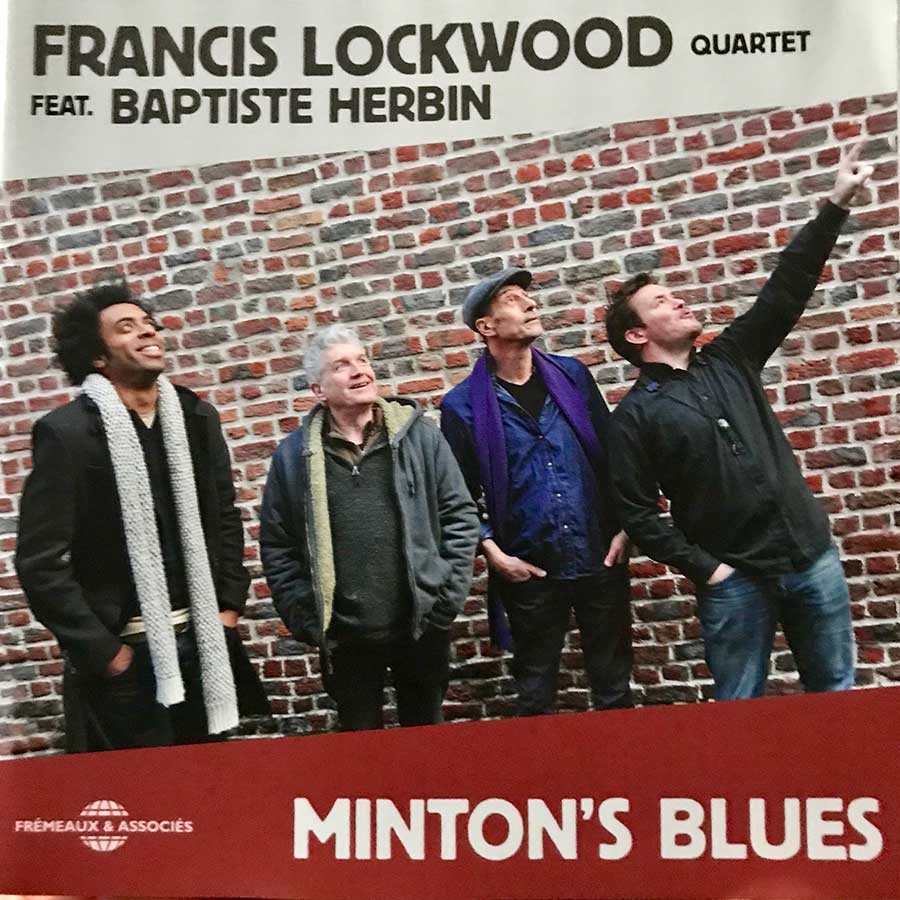




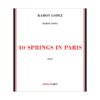


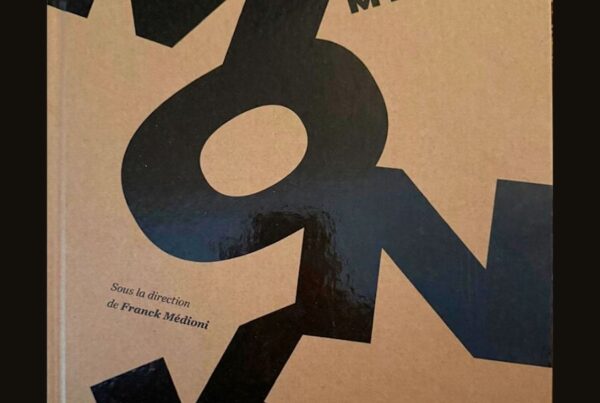



RECENT COMMENTS